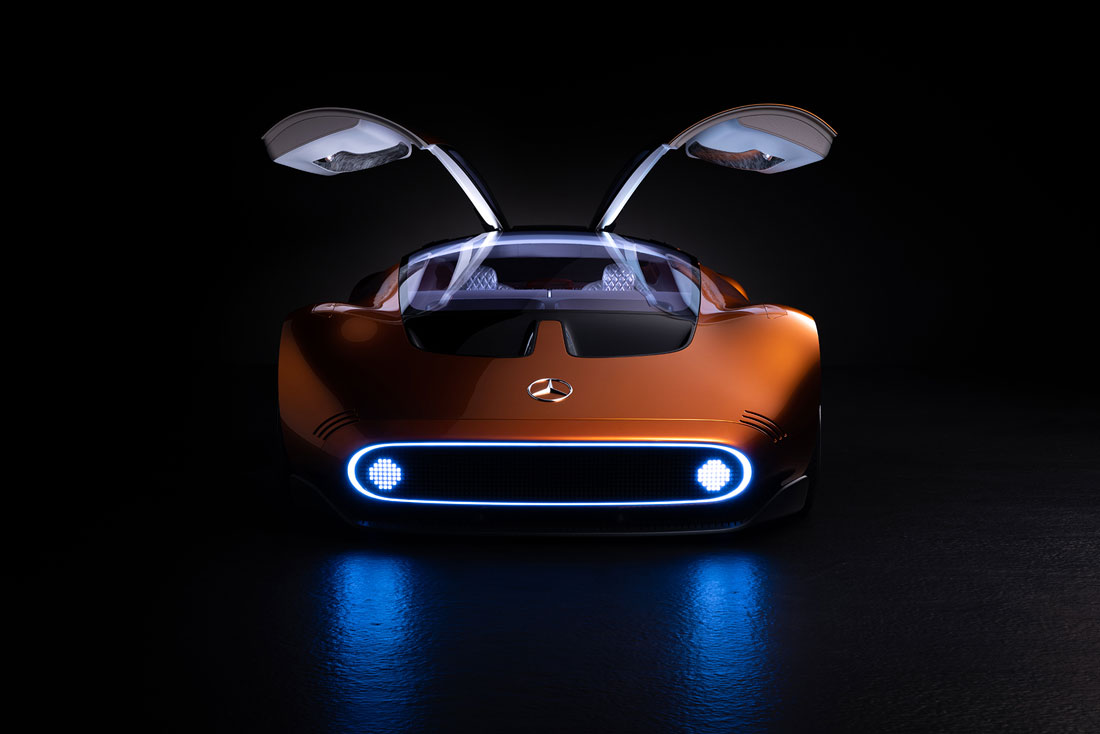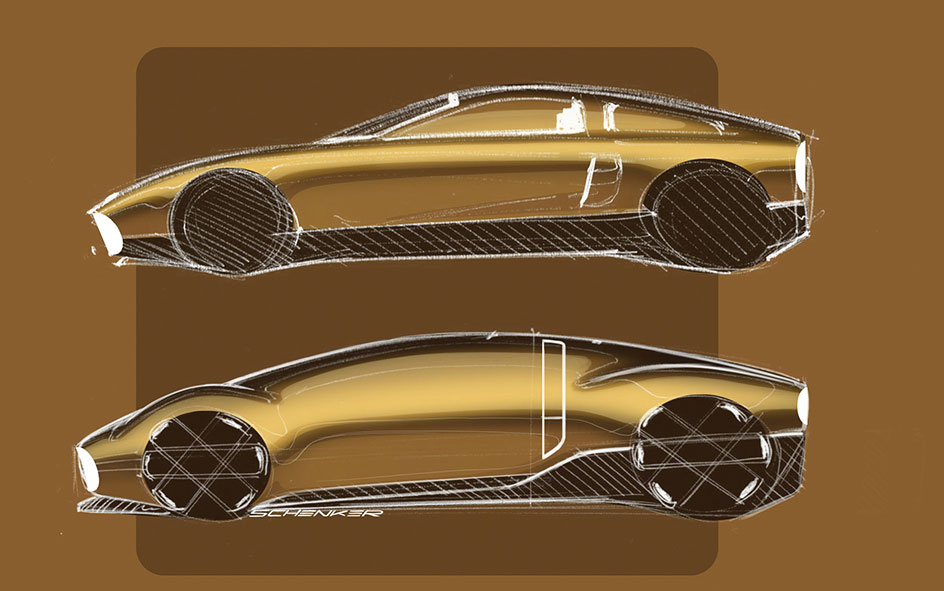Looking to the past to seek inspiration for the future is not a novel concept. What matters is to do it in an original way. “That’s the difference between retro design and futuristic styling with nods to our iconic past”, explains Gorden Wagener, Chief Design Officer of Mercedes-Benz. “We have so many stunning models to choose from that it is easy to fall into the trap of being carried away by past legends. The One-Eleven concept is, however, clearly an object for the future while remaining recognisable as a Mercedes”, continues Wagener, whom we met up with in Stuttgart in a studio a couple of kilometres away from Mercedes-Benz headquarters. Before us, a splendid speedster with sleek, flowing lines (some credit also goes to the warm orange colour).
The homage to the C 111
The references clearly pay homage to the C 111, the first in a series of experimental cars produced between 1969 and 1979 to test pure forms (the design was the work of Bruno Sacco and Josef Gallitzendörfer) and newly developed engines. “The styling cues are the same on the One-Eleven. All cars today are huge, but what’s the point when you’re designing a speedster?” The sloping hood is reminiscent of the C 111, but at the end is a digital panel with visible pixels, useful for projecting light and relaying information to other road users.
The One Bow Line defines the design
Like all the new zero-emission Mercedes in the EQ range, the One-Eleven is also defined by the one-bow line, a single arching line that starts at the front, extends over the roof and runs into the rear. “At this point it is one of our hallmarks, a visible manifestation of aerodynamics”, Wagener continues as he observes the car from a distance. “Do you see how low it is? There has never been an electric car so close to the ground (1,170 millimetres, ed.): it’s a genuine sports car”.
Electric motors in the wheels
The reason is all technical. The One-Eleven’s motors are located in the wheels and use axial-flow technology developed by the British company Yasa (Mercedes-Benz-owned since 2021). In addition, the battery pack consists of high-density cylindrically shaped cells. “The advantages are countless, just think that these motors are more compact and weigh a third of the radial-flow motors used today. This opens the way for us creatives to come up with new styling solutions, both for high-performance cars and for models dedicated to transporting people”.
Interior between past and future
“We can exploit every inch of space”. If active aerodynamics are concealed in the rear, the interior is a vibrant burst of colour: “For the interior we chose white, which has always been the colour of the future”, Wagener continues. The upholstery is recycled polyester; armrests, thresholds, centre console, and rear luggage shelf (there’s a dedicated luggage set too) are covered in bright orange.
The pixel display
A stark contrast to the futuristic cabin is the pixelated display that spans the width of the dashboard: “It echoes front and rear and delivers a flavour of the past consistent with our brand: you don’t build a sound future if you’re not conscious of your roots”.
(Full article in A&D no. 261)
















